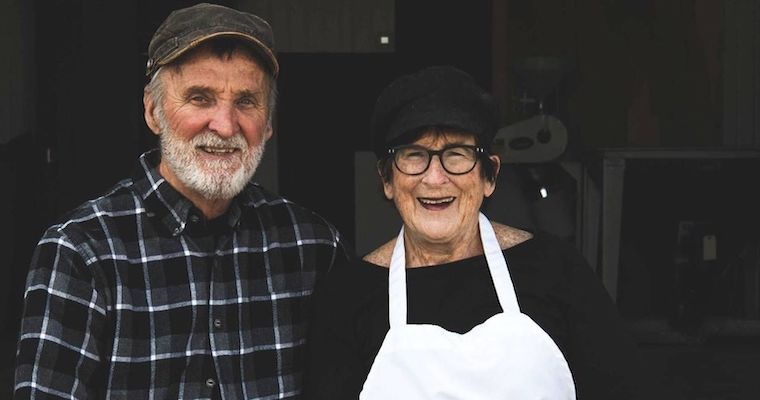Bread Lover's Wheat Allergy Leads to a Second Career in Heritage Grains

Darrold and Martha Glanville
EDITOR'S NOTE: This first-person account of changing careers and starting a business is one in a series of eight stories shared by Next Avenue readers. Read the entire collection here.
By Darrold Glanville and Martha Glanville
Before we moved to rural North Branch (Minnesota) in 2006, Darrold owned a small biotech company and Martha was a special education teacher in Minneapolis. We have a passion for cooking, baking, and sharing meals with others; we particularly enjoy bread, pizza and pasta. As a retirement project, we ground our own flour using tabletop mills in a room attached to our garage. We ate some and sold the rest at a local farmers market.
Darrold started baking more and developing products to sell, so we were eating more wheat. He became increasingly achy and lethargic. Over a few months, he developed many health problems and doctors could not figure out why. After a large pasta dinner, symptoms hit a peak. Like many others, Darrold began to question if gluten might be to blame — modern wheat gluten, that is.
Together, we went gluten-free that day. In just two days, Darrold felt better, and in two months he was symptom-free. But we missed eating bread, pasta and pizza, and so we tried to determine how we could get our favorite foods back.
Heritage Varieties Beat Hybrids, Hands Down
This is where our heritage wheat journey began; a journey that led us to discover these special wheat varieties that caused no issues. We tried spelt, emmer, and einkorn. We thought they baked a little heavy so we tried Turkey Red, Red Fife, White Sonora and Pima Club. These heritage grains have some gluten but we find them easier to digest than the hybridized wheat varieties you find in most commercial flour now.
The joy we felt being able to eat our favorite foods again was immeasurable. Sunrise Flour Mill grew out of our desire to help the thousands of home bakers who struggle with gluten find their way back to their favorite foods. If heritage wheat could help even one person the way it helped Darrold, it would all be worth it.
We began selling our heritage flour at the local farmers market in 2011 or 2012, and slowly but surely people started realizing this flour was special. They could eat foods made with heritage wheat without the discomforts they had with modern wheat.
By 2017, we were both in our 70s and the business was bigger than the two of us were able to handle. We had to decide whether to stop or get bigger. We chose the latter.
Expanding into Pancakes and Pasta
We hired a consultant who spent two months working at the mill and helped us secure an MDA (Minnesota Department of Agriculture) grant, and bank loans. That enabled us to purchase a 5,200 square-foot building and hire a general manager with a background in e-commerce.
We slowly added equipment and staff, which has allowed us to grow to the size we are today. We also added product lines, starting with pancake mix, then pastas; we are getting ready to launch some baking mixes. We added baking accessories like knives and whisks a couple of years ago when the COVID baking era appeared.
We still go to the Mill City Farmers Market; one market is all we feel like we can do any more. We have a presence in many coops, specialty stores and restaurants, but our primary sales channel is e-commerce.
If you find you have a passion for something, never let age stand in your way. Sunrise Flour Mill is so much more than anything we ever thought it would be, and we wouldn't want it any other way.
Editor’s note: This article is part of America's Entrepreneurs, a Next Avenue initiative made possible by the Richard M. Schulze Family Foundation and EIX, the Entrepreneur & Innovation Exchange.

.png)